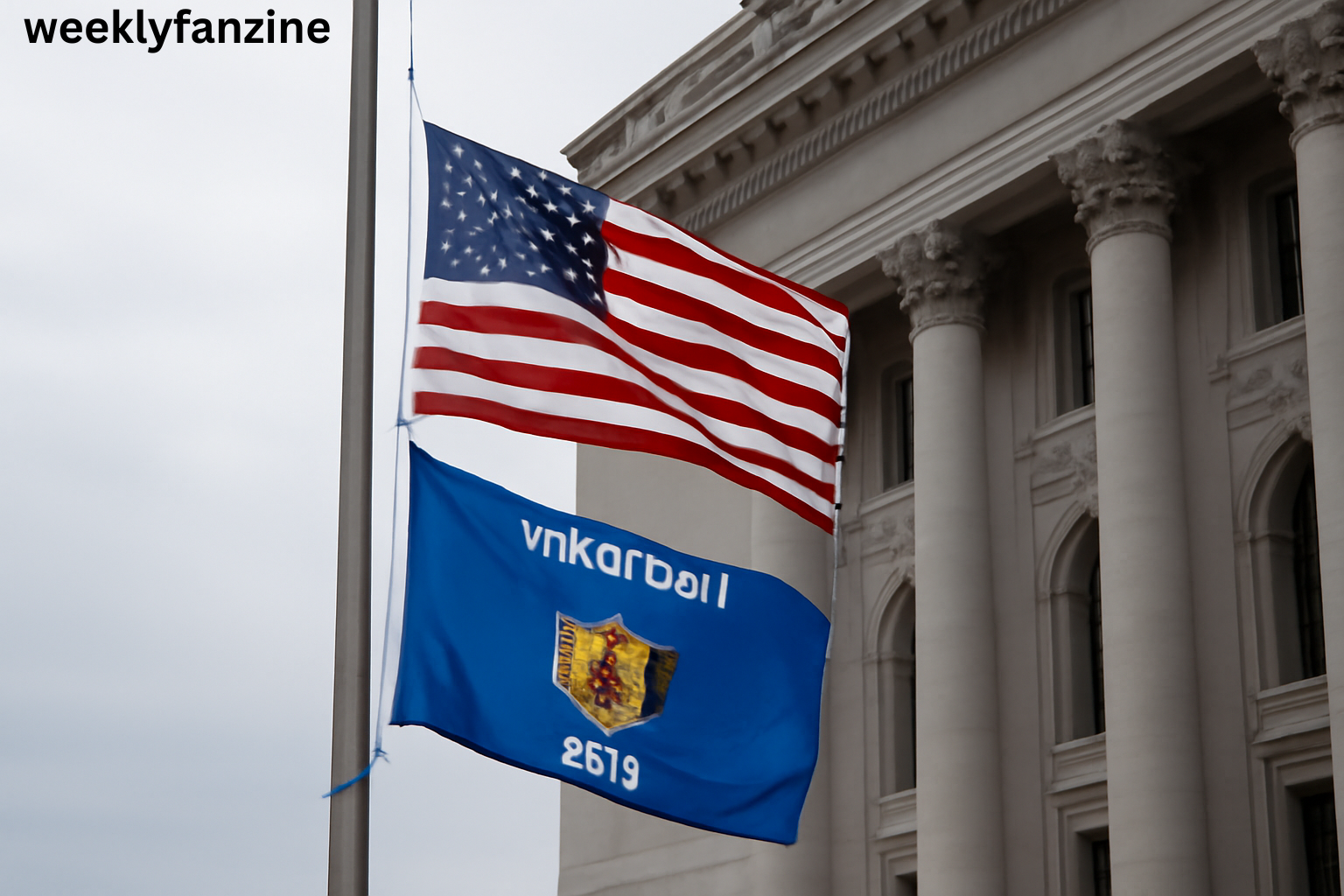Flags are not just pieces of fabric; they carry deep symbolism and reflect the values and traditions of a community, state, or country. In Wisconsin, as in other states, the practice of lowering flags to half-staff is a solemn and meaningful gesture that signals respect, mourning, and remembrance. This article will explore the meaning behind Wisconsin flags at half-staff, the circumstances under which they are lowered, and the protocols that govern this important tradition.
What Does Half-Staff Mean?
The term “half-staff” refers to the positioning of a flag when it is flown at half its full height on a flagpole. This action is not simply a casual decision but a deliberate symbol of respect and mourning. The flag is lowered in a way that signifies mourning for a specific individual or group or a tragic event. This gesture can be observed for various reasons, ranging from the death of notable public figures to national tragedies or commemorations of significant historical events.
In Wisconsin, the tradition of lowering the flag to half-staff follows specific guidelines set by state laws and executive orders, as well as national protocol. This practice is usually implemented by the Governor’s office or other local authorities and is a public acknowledgment of loss or respect.
When Are Flags Lowered to Half-Staff in Wisconsin?
Flags in Wisconsin are lowered to half-staff for various reasons. These can include the deaths of significant figures, both on the state and national level, national days of remembrance, or in the aftermath of tragedies that affect the state or country. Here are some common instances when the flag may be flown at half-staff in Wisconsin:
1. Death of a Public Official
One of the most common reasons for lowering the flag is the death of a public official, especially those who have served at the state or national level. This includes state governors, U.S. Senators, and the President of the United States. The Governor of Wisconsin typically issues an executive order when the flags are to be lowered to half-staff in the event of the death of a public figure, ensuring that the entire state observes the act of mourning.
For example, when a U.S. president or Wisconsin governor passes away, flags are lowered to half-staff as a sign of respect for their service. These orders are often carried out by local governments, schools, and public institutions across the state.
2. Commemoration of National Tragedies
Flags in Wisconsin may also be lowered to half-staff in the wake of national tragedies or significant events that affect the nation as a whole. This includes the anniversary of events such as the September 11 attacks, which shook the country to its core, or the passing of soldiers and military personnel who have died while serving the country. In these cases, Wisconsin residents join the rest of the nation in expressing collective grief and respect through this ceremonial gesture.
3. In Memory of Victims of Local Tragedies
When a local tragedy occurs, such as a mass casualty event or the death of a significant local figure, flags may be lowered to half-staff as a community gesture of mourning. This includes events like a shooting, natural disasters, or the passing of an influential local figure, like a prominent community leader or a firefighter who has died in the line of duty.
The Governor or local government typically issues a proclamation in such instances to ensure that the state formally observes the tragedy with respect. Wisconsin’s connection to its citizens through this practice reinforces the state’s commitment to honoring those who have made sacrifices or who have been affected by loss.
4. Military Remembrance
The loss of military personnel, particularly those from Wisconsin, also prompts the lowering of flags to half-staff. On Memorial Day, for instance, flags are traditionally flown at half-staff in memory of soldiers who died during service to the country. This is not limited to a single day of remembrance but extends to any time a Wisconsin soldier is killed while serving in active duty.
The act of lowering the flag serves to show gratitude and remembrance for those who have made the ultimate sacrifice in defense of the country. It is a way to honor their service and reflect on the cost of freedom.
5. Other National or International Events
There are also national observances, such as the death of a foreign leader or an important event that affects international relations, that can prompt a half-staff order in Wisconsin. For instance, if a dignitary from another country passes away or there is an international tragedy, the state may participate in the observance as part of global solidarity.
The Protocol for Half-Staff Flags in Wisconsin
When flags are flown at half-staff, there is a specific protocol to ensure that it is done respectfully and correctly. In Wisconsin, this protocol is governed by both state laws and federal guidelines. Here’s how the process typically works:
1. Executive Orders
The Governor of Wisconsin has the authority to issue proclamations directing that flags be lowered to half-staff. When a public figure dies, or when the state needs to observe a period of mourning, the Governor issues a formal order for flags to be flown at half-staff for a specified period. The proclamation will often detail when the flags should be raised again to their full height.
2. Raising and Lowering the Flag
The American flag is typically raised to the top of the flagpole briefly before being lowered to half-staff. This signifies the respect given to the flag before it is flown at half-staff. The flag should then be lowered to a point halfway between the top and bottom of the flagpole. It’s essential that the flag remains in this position for the duration of the period of mourning, whether it is a day or a week.
At the end of the period of mourning, the flag should again be raised to the top of the flagpole before being taken down. This signals the end of the observance and restores normal order.
3. State and Federal Guidelines
Both state and federal governments provide guidelines to ensure that flags are flown correctly at half-staff. The U.S. Flag Code provides the federal rules on flag protocols, while Wisconsin may have additional state-level practices that complement national observance. Public institutions and government offices in Wisconsin follow these guidelines strictly to ensure consistency and respect.
How the Public Responds to Half-Staff Flags in Wisconsin
For many residents of Wisconsin, seeing a flag at half-staff is a moment of reflection. It is a sign that something significant has occurred, and it compels citizens to pause and consider the loss or event being commemorated. Whether it’s a public official’s death, a national tragedy, or a local loss, the lowering of the flag fosters a sense of unity and remembrance.
Citizens also participate in this tradition by lowering flags at their homes, schools, and businesses. These acts reflect a shared sense of mourning and respect for the lives lost or the solemn occasion being marked. In many cases, private citizens may not wait for the Governor’s office to issue a directive but will instead voluntarily lower their flags as a sign of respect.
Why This Tradition Matters
The tradition of lowering the flag to half-staff holds significant meaning in Wisconsin, as it does across the United States. It is a way to acknowledge the gravity of certain events and to unite people through shared experiences of mourning. By flying the flag at half-staff, Wisconsin residents express solidarity, respect, and remembrance for those who have contributed to the state or nation in meaningful ways or who have suffered tragic loss.
Conclusion
The act of lowering flags to half-staff is more than just a ceremonial gesture. It represents Wisconsin’s values of respect, remembrance, and unity. Whether in response to the passing of a public figure, the commemoration of a tragedy, or the honoring of military service, Wisconsin citizens come together through this act to acknowledge loss and express collective grief. As such, half-staff flags continue to serve as a powerful reminder of the state’s commitment to honoring and respecting those who have made a significant impact on society, whether through service, sacrifice, or leadership.


